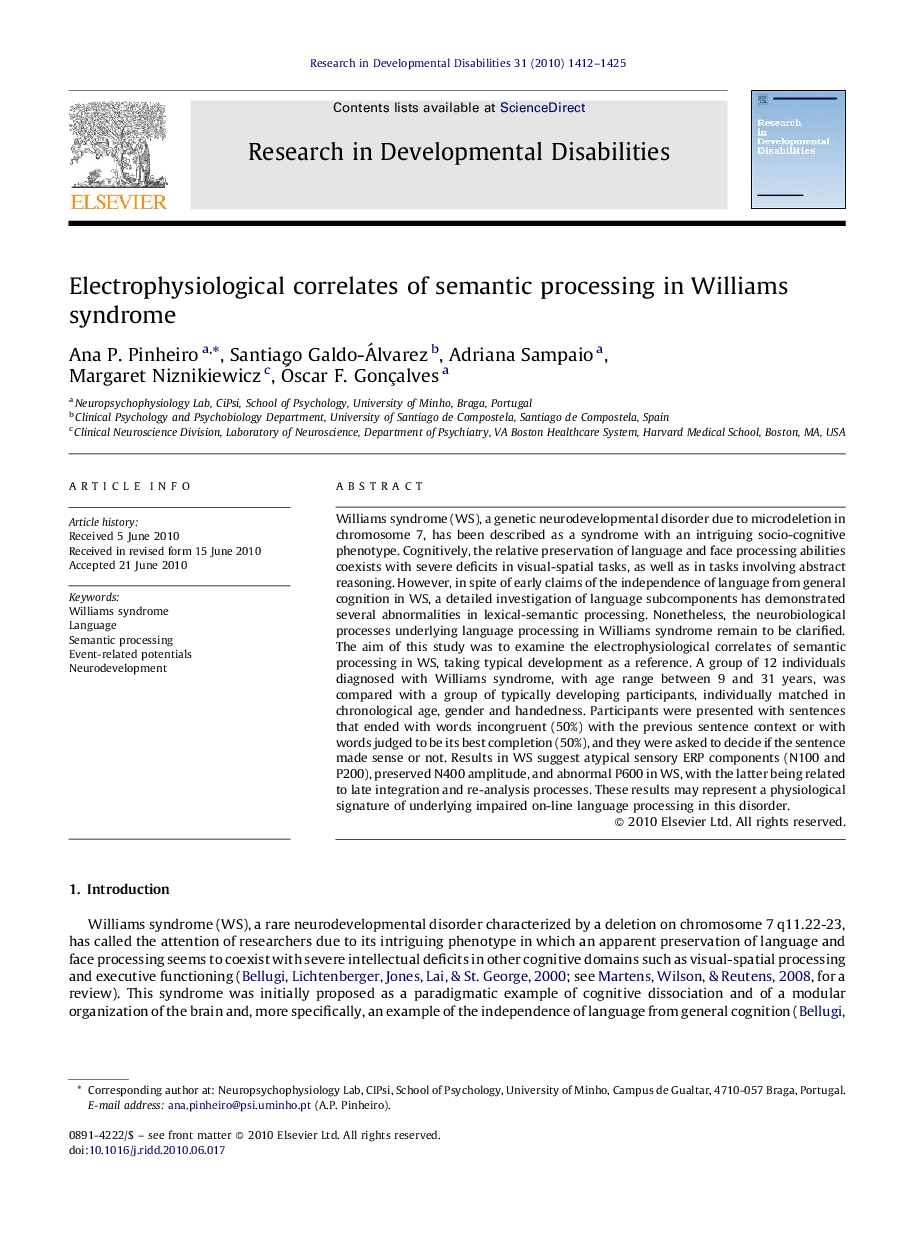| Article ID | Journal | Published Year | Pages | File Type |
|---|---|---|---|---|
| 10318304 | Research in Developmental Disabilities | 2010 | 14 Pages |
Abstract
Williams syndrome (WS), a genetic neurodevelopmental disorder due to microdeletion in chromosome 7, has been described as a syndrome with an intriguing socio-cognitive phenotype. Cognitively, the relative preservation of language and face processing abilities coexists with severe deficits in visual-spatial tasks, as well as in tasks involving abstract reasoning. However, in spite of early claims of the independence of language from general cognition in WS, a detailed investigation of language subcomponents has demonstrated several abnormalities in lexical-semantic processing. Nonetheless, the neurobiological processes underlying language processing in Williams syndrome remain to be clarified. The aim of this study was to examine the electrophysiological correlates of semantic processing in WS, taking typical development as a reference. A group of 12 individuals diagnosed with Williams syndrome, with age range between 9 and 31 years, was compared with a group of typically developing participants, individually matched in chronological age, gender and handedness. Participants were presented with sentences that ended with words incongruent (50%) with the previous sentence context or with words judged to be its best completion (50%), and they were asked to decide if the sentence made sense or not. Results in WS suggest atypical sensory ERP components (N100 and P200), preserved N400 amplitude, and abnormal P600 in WS, with the latter being related to late integration and re-analysis processes. These results may represent a physiological signature of underlying impaired on-line language processing in this disorder.
Related Topics
Life Sciences
Neuroscience
Behavioral Neuroscience
Authors
Ana P. Pinheiro, Santiago Galdo-Álvarez, Adriana Sampaio, Margaret Niznikiewicz, Ãscar F. Gonçalves,
